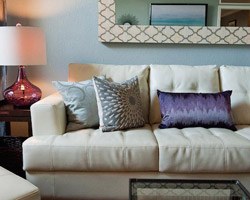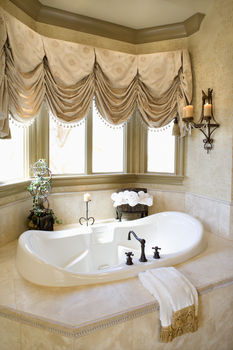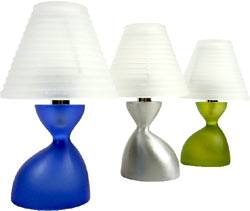
Many times good interior design counts on a certain kind of sleight-of-hand: The very best job is the one you don't notice, because it doesn't call attention to itself.
Good lighting, in a home or business, is one of those things that's invisible - if it's done well. You only notice the lighting of a room if it's too bright or too dim, not if it's just right. Our goal in offering this series of articles on Lighting is to give you some concrete advice on how to light a room so effectively that no one notices whether you're using florescent or incandescent lights, track lighting or standing lamps. They'll notice only that the room feels comfortable, and that they want to come back again.
As you know, there are many aspects of interior design that go beyond simply choosing the colors and fabrics that will look good in a particular room. In fact, the Sheffield Course in Interior Design teaches students not only the finer points of making a room look good, but also the other elements that many beginning designers don't consider, such as how to run a business.
One of the most important considerations in designing any room is safety. A poorly designed bathroom, a study with an overloaded electrical outlet, a kitchen with an ill-placed stove can all spell serious injury for the occupants and have a negative impact on your interior design business.
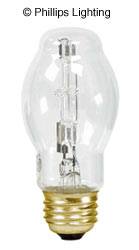
Lighting is one area in which safety is paramount. One consideration is that you need to have enough light to be able to perform tasks safely; you don't want to be trying to repair something in your workshop with lighting so low you're bound to pound your thumb instead of the nail.
But safety goes further than that when you're considering using halogen bulbs for your lighting.
As we discussed in the last installment of Lighting 101, halogen bulbs are long lasting, and emit a bright light; they can be an excellent choice for the home or office. Many times they're used in ultra-modern fixtures, creating a dramatic lighting option.
But because they burn so hot, halogen lamps also pose a danger, and this danger is great enough that many local fire departments around the U.S. have issued public warnings about them.
Underwriters Laboratories, Inc. which gives a seal of approval to certain electrical items, issues these warnings when using halogen torchieres.
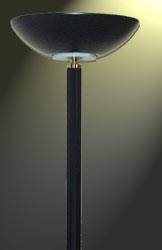
- Carefully read any and all safety instructions, warnings and markings that accompany the product before use.
- Never place materials such as clothing and towels on the top of a torchiere lamp.
- Never place a torchiere lamp near an open window where a strong breeze could blow drapery onto the lamp bulb.
- Avoid placing lamps in locations where they may be easily tipped over by children or pets.
- Never use torchiere lamps in children's bedrooms or playrooms. Children may play with lamps or unknowingly place combustibles, such as stuffed toys or clothing, too close to the bulb area.
- Keep torchiere lamps away from elevated beds, such as bunk beds, where bedding may get too close to the bulb area.
- Always turn off or unplug the lamp before removing or replacing bulbs.
- Never attempt to replace or discard a bulb that is hot to the touch.
- Never use a bulb of a different style or higher wattage than recommended by the manufacturer's use and care instructions.
- Never operate any lamp with missing or damaged parts or components.
- Avoid leaving high-wattage (more than 100 watts) halogen lamps on when you leave the room or when you are not at home.
These warnings shouldn't be taken to mean that you should abandon any plans of using halogen lights in a home; they do have a place in d?or. But as with other elements of design, you need to exercise care, and to carefully consider the best use for this type of lamp.


